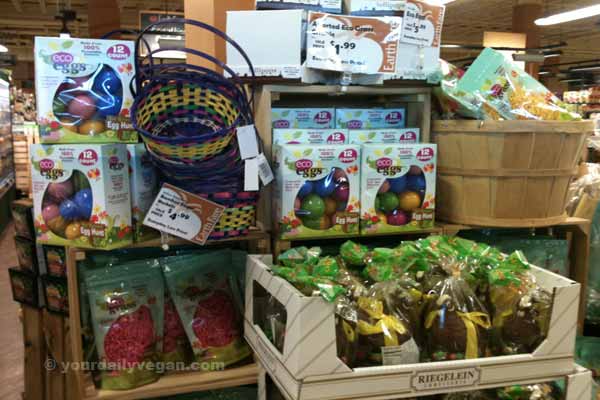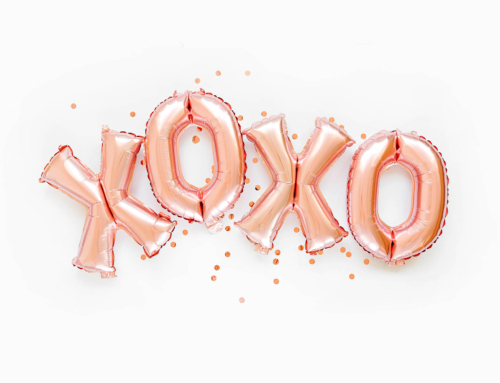Misleading the Masses: How to Have an Eco-Friendly Easter
Disclosure: This post may contain affiliate links
We can't be "Eco-Friendly" without first taking a look at the animals we are consuming.

What's in this post

I went to my local Earth Fare the other day to pick up a vegan doughnut.
Anyway, I couldn’t help but to notice the Easter displays every 5 steps in the store. Eco-friendly Easter eggs, eco-friendly Easter basket grass, eco-friendly Easter baskets, eco-friendly milk chocolate bunnies- wait, what?
Yes, nestled between the worlds largest displays of eco-things, was prettily packaged milk chocolate confections of every cute design and color. Sigh. Milk. Sigh. Eco-friendly.
Everyone loves being “eco,” don’t they? It’s everywhere. This advertising tactic is frequently called “greenwashing.” This practice merges “green” (environmentally conscious) and “whitewashing” (to gloss over wrongdoings) to describe the use of green marketing, which promotes the misleading perception that a company is environmentally friendly. You’ve heard it before, “eco-friendly,” “natural,” and “green.”
Listen, dairy milk anything isn’t eco-friendly and never can be. Dairy cows don’t just magically produce milk. Like humans, a cow will only produce milk once she’s given birth. This requires exploiting the cows by forcibly impregnating them over and over in unnatural cycles to keep them producing milk for their babies, which we take away from her. And, if we can’t use the cows (meaning they aren’t girls who can start the cycle anew), we chain them in a crate so that they can’t move- later to be sold as “veal.” In fact, the veal industry is a direct result of the dairy industry.
Did you know that the longest a baby calve can expect to live is approximately 35 weeks- or, nearly 9 months? The average time a baby calf is kept alive is 24-26 weeks, after which they are sent to slaughter. In some cases (1 million cases a year) baby calves are slaughtered at 5 days old.
Packaging milk chocolate up in an “eco” wrapper doesn’t make it any more “eco-friendly.” The cow who lost her life doesn’t care if the basket that contains a product made from her suffering is made from bamboo or not. She still lost her life. Livestock production, and the subsequent killing of livestock, is a major contributor to global warming. Then there is the fact that the cow was most likely born into the factory farming life. This means that she was denied a chance to bond with her mother, force fed food not natural to her species, forcibly impregnated, had her babies stolen and forced to live a short life of misery until her throat is slit (sometimes without the use of anesthesia) and she dies. And even if the cow was born onto an “organic” farm- she will still eventually lose her life (after repeated pregnancies and loss of children).
How many resources did we use to birth, raise and slaughter the cow so that we can make milk chocolate confections to celebrate life (Easter)? We recently presented some disturbing facts in a recent post, Ecology 101: Trophic Levels, What Level are You?:
Can someone tell me how any of this is “Eco-Friendly”? How can we look at one side of the equation (bamboo baskets, recyclable eggs, recycled basket “grass”) and neglect the other (dairy)?
Here’s the bottom line. We can’t be “Eco-Friendly” without first taking a look at the animals we are consuming. It doesn’t matter how many light bulbs we replace, whether we buy “green” cleaners for our houses, carry an eco-friendly water bottle or have organic cotton sheets for our beds. If we consume animals, in any way, then we are not being “Eco-Friendly.” Period.
Live vegan. No single action will help the animals, the humans, and the Earth more.
Find a great list of dairy-free chocolate confections for this holiday or any right here on Go Dairy Free.
We also explore greenwashing and this type of misleading practice in our series Ad Nauseam, a look at advertising through the ethical vegan lens. Be sure to check it out.






“If we consume animals, in any way, then we are not being “Eco-Friendly.””
God, do I wish I could convince my environmentally-conscious friends to get this point. It seems so obvious, doesn’t it? “eco-friendly milk chocolate” is an oxymoron if I ever heard one.
Awesome! Well done, KD.